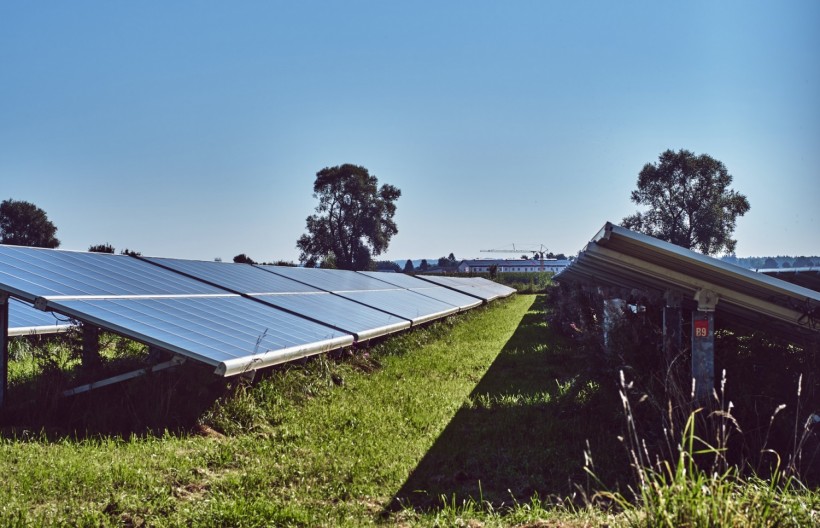
Japan has been ahead of the US in terms of installed solar capacity per capita since 2001. The margin has increased from 21 watts to 296 watts per capita in 2022. One of the reasons is the efforts and innovation of the private sector. At the forefront of it, Pacifico Energy has been facing declining pricing challenges from an operational perspective. The company is a leader in the sector, and its primary goal is to keep its leading position in solar innovations. The company's major success is in its motivated team. Its Senior Asset Manager, Chanvibol Sok, has overseen and combined both the technical and financial aspects of Solar Asset Management, maximizing performance and investor returns. Chanvibol is one of the company's key employers and is responsible for the company's success and the development of the industry in general.
The race to increase solar energy across the world can perhaps be best observed between the United States and Japan. According to the International Renewable Energy Agency (IRENA), as of 2022, the total installed solar capacity of the US was 111.5 GW, compared to Japan at 78.8 GW. By the numbers, the US has far outgrown the market in Japan by a wide margin. However, just looking at the numbers doesn't show the whole picture.
By analyzing the capacity per capita, the US is falling behind Japan significantly. The US has always been behind. The margin has increased from 21 watts per capita in 2001 to 296 watts per capita in 2022. The energy isn't reaching everyone in the country.
Why has Japan continued to grow while the United States has stagnated? This can be explained by looking at the reliance of the US solar energy market on government policies, specifically the Tax Credit system. Planning and implementing solar projects can take years, and there is uncertainty about the Tax Credit when an administration changes. A different approach to policymaking may cause further changes in such project support.
By contrast, Japan's solar market isn't solely dependent on the government. Although the market growth was given a boost by their government's launch of the Feed-in-Tariff (FiT) in 2012, the continuous market growth is sustained by the efforts and innovations of the private sector. The FiT system requires electric companies in Japan to purchase electricity from renewable energy at a certain price for a certain amount of time under certain conditions.
The appeal of the Feed-in-Tariff system in 2012 was the attractive pricing set per kWh. In 2012, the price was 40 yen per kWh. The price has been declining since then and will now be less than 10 yen per kWh in 2023. Pacifico Energy, a privately held alternative energy development company, has been at the forefront of the solar industry. Since 2012, Pacifico Energy has developed and built more than 1.3 GWdc capacity of solar power plants in Japan. It has raised more than 4.6 billion in funding. Specifically, one of its Senior Asset Managers, Chanvibol Sok, is facing this declining pricing challenge from an operational perspective by innovating a new approach to Solar Asset Management.
About Pacifico Energy
Pacifico Energy aims to develop alternative energy resources like solar photovoltaic and offshore wind production. With its headquarters in the US, it has expanded its offices to Japan, Vietnam, and Korea. Its main partners are investors interested in alternative energy projects, communities, and suppliers. Key clients are landowners and utility companies. Investments have brought over 1 GW in promising renewable power projects. From its foundation in 2012, it has raised over USD 4 billion in equity and debt financing. Nine significant solar projects have been financed worldwide, four of which have reached the financing stage in Japan.
Quite recently, Pacifico Energy Group established a new affiliate company in the United States to expand its solar business. As of August 2023, Chanvibol was transferred to this affiliate to establish and develop asset management operations in the US market. He knows the industry, inside and out, and was the obvious choice to implement his time-tested, innovative approach in the United States.
Most solar companies limit the role of a solar asset manager to financial duties only, leaving the technical management to engineers and specialized operators at the project site. At Pacifico Energy, Chanvibol, arguably the most experienced and qualified Senior Asset Manager at Pacifico, is able to leverage his accounting background in the way he approaches each new energy project entrusted to his capable hands. He has overseen and combined both the technical and financial aspects of Solar Asset Management, maximizing performance and investor returns. His approach removes the disconnection between different departments in the company, speeding up the root-cause analysis and smoothing any problem-solving.
For example, Chanvibol takes the lead in finding solutions for drops in power sales, analyzing operational data, looking for possible reasons, and then providing specific instructions to the technical contractors or engineers in the company to investigate or inspect the power plant. Compared to traditional asset managers, he has more flexibility and insight. Chanvibol can identify underlying issues, analyze and understand those issues, and make timely recommendations to improve and increase the plant's performance.
His contribution to the advancement of the solar energy industry can't be overstated. Chanvibol's great ambition is to use his expertise and skill to help launch new solar projects while assisting existing solar power plants to maximize their productivity. He wishes to use his expertise to contribute to the advancement of the solar energy industry as a whole. His transfer to the United States will lead to growth in the solar industry, contributing to a more sustainable future and the global green energy revolution, combating climate change, creating jobs, and increasing economic growth.
About the Author
Ed Kelley is a science and energy writer with an interest in how green energy advances the world.
* This is a contributed article and this content does not necessarily represent the views of sciencetimes.com



![Earth's Quasi-Moon Kamo‘oalewa Could Originate From Lunar Surface Not Asteroid Belt [Study]](https://1721181113.rsc.cdn77.org/data/thumbs/full/53275/89/56/50/40/earths-quasi-moon-kamo-oalewa-could-originate-from-lunar-surface-not-asteroid-belt-study.png)










